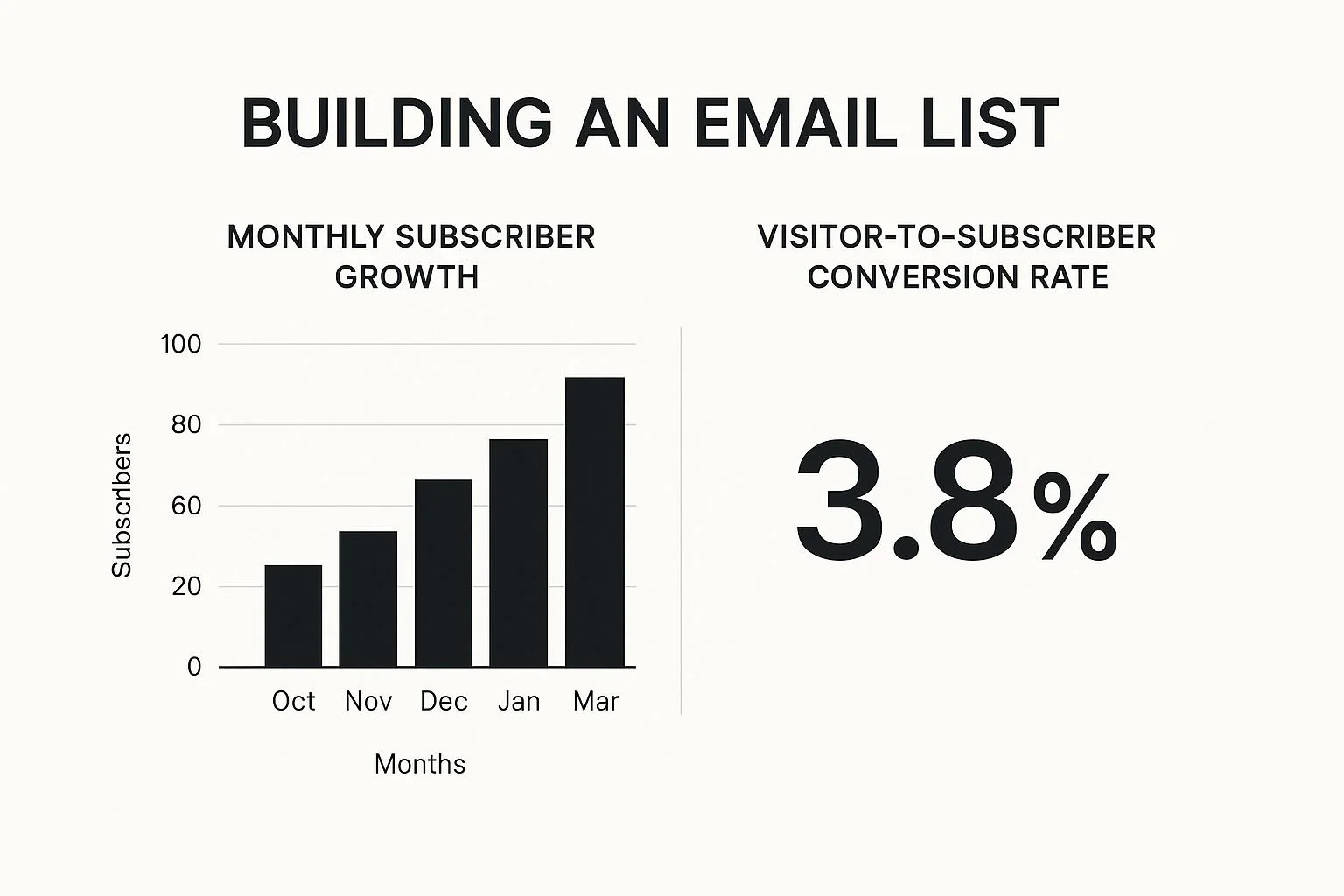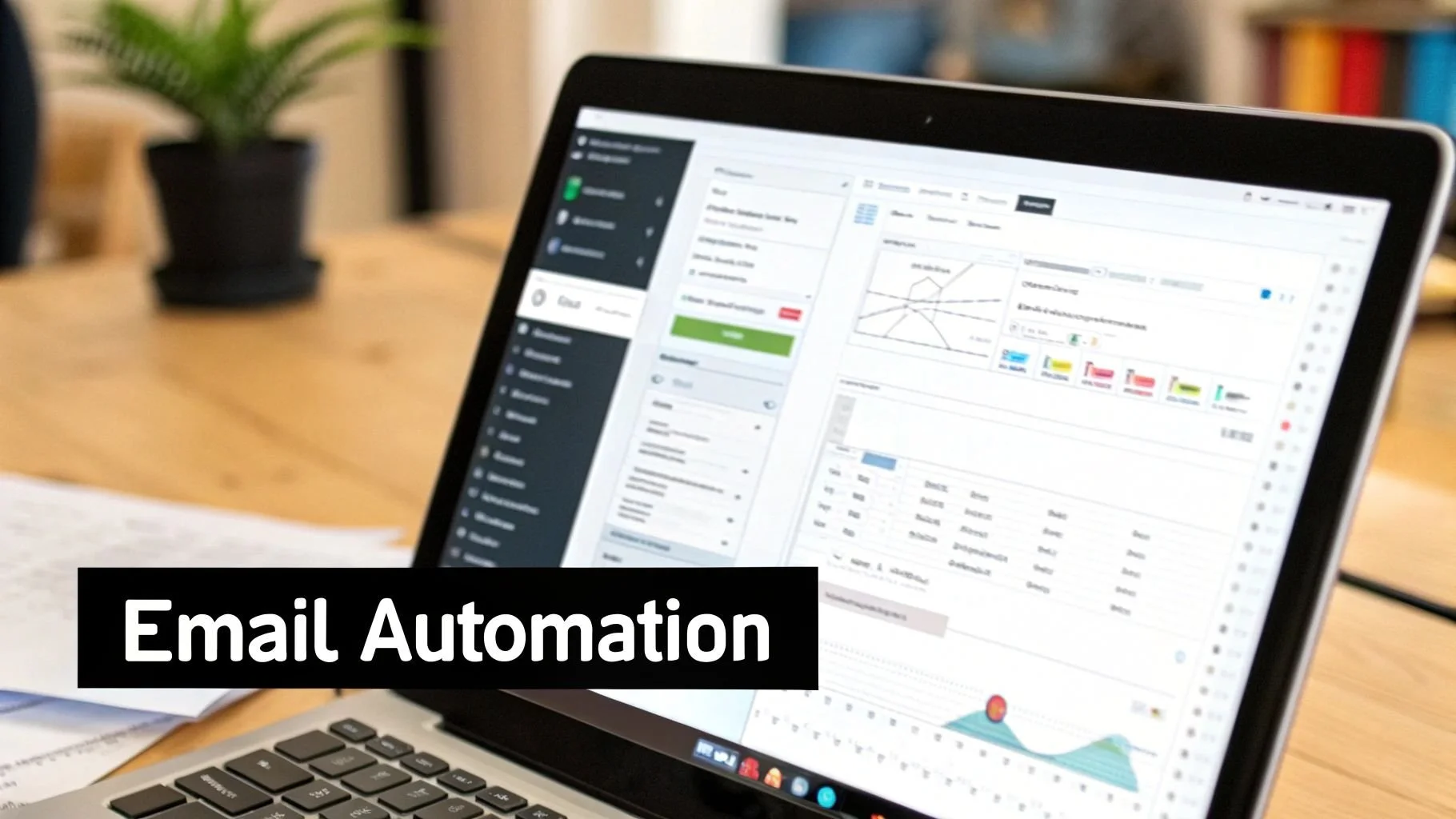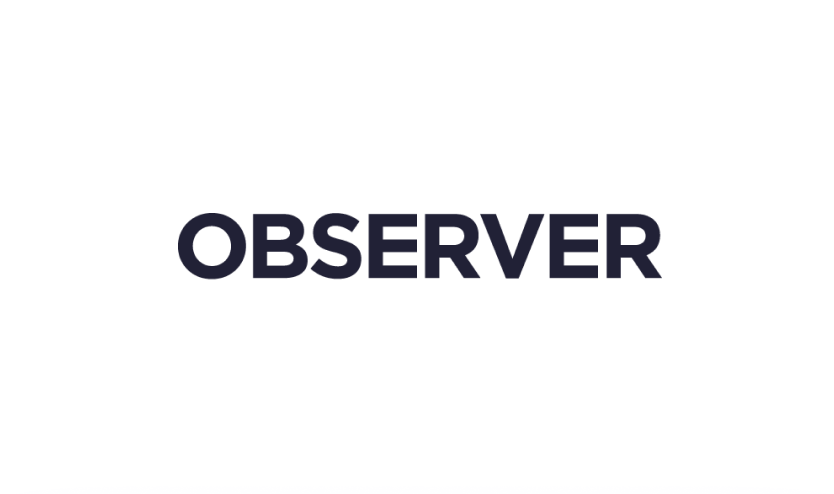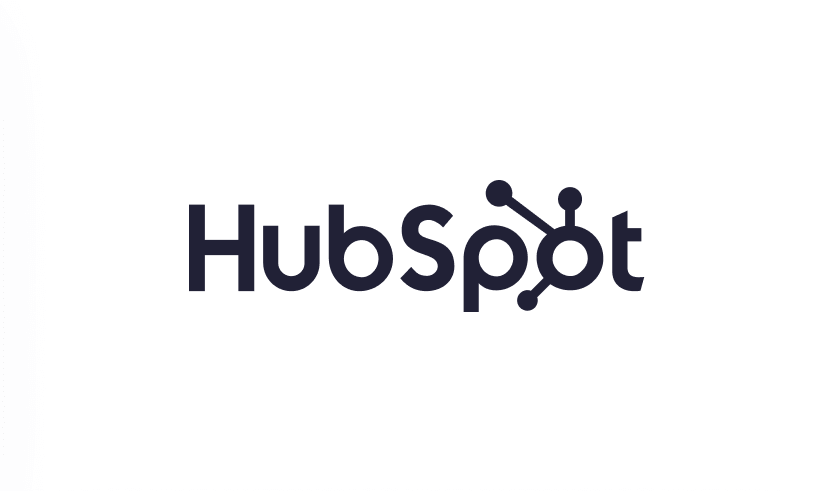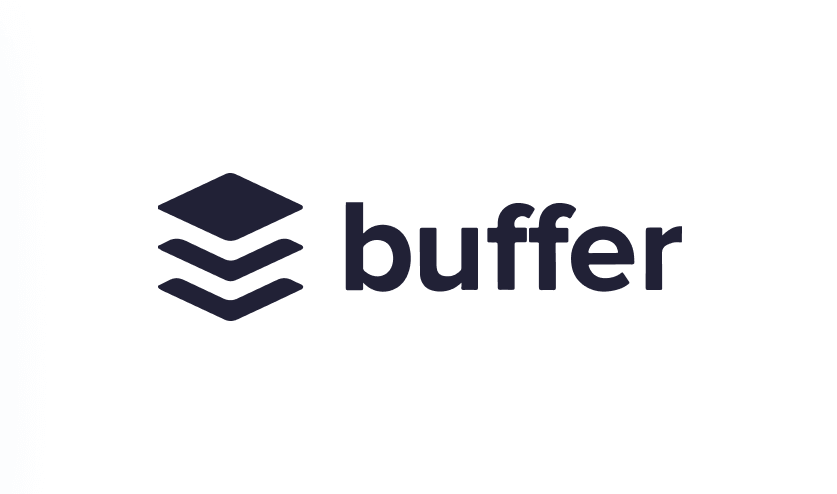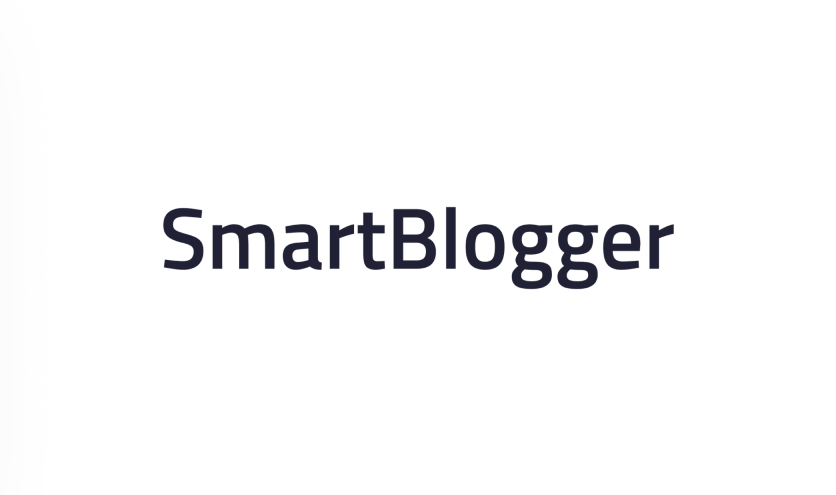Ecommerce Email Marketing Strategy: Boost Engagement & Sales
Why Email Marketing Dominates the Ecommerce Landscape
Email marketing might feel a bit old-fashioned in today's fast-moving online world. But for ecommerce businesses, it's still a crucial tool. It consistently beats other marketing channels, and many top brands are focusing on email while others chase the latest trends. So what makes email so powerful?
The Power of Direct Communication and Scalability
Email lets you speak directly to your customers. This one-on-one approach builds stronger relationships. Unlike social media, where algorithms control what people see, email lands right in the inbox. This ensures your audience sees your promotions, news, and helpful content, making it easier to build trust and loyalty.
Email marketing is also incredibly scalable. The basics stay the same whether you have 100 subscribers or 100,000. This makes email the foundation for steady ecommerce growth. You can easily reach more people as your business expands without needing to overhaul your strategy.
For example, imagine launching a new product. Email lets you instantly tell everyone on your list, creating buzz and driving early sales. This kind of targeted reach and immediate impact is hard to achieve elsewhere. Even with a small budget, you can see big returns from email marketing.
Unmatched ROI and Customer Engagement
One key reason email dominates is its impressive ROI (Return on Investment). A core part of any ecommerce email marketing strategy is the sheer size of your potential audience. There are roughly 4.6 billion email users worldwide as of 2025, expected to hit 4.8 billion by 2027. This massive user base makes email critical for connecting directly with consumers.
In fact, 87% of marketing leaders consider email essential for their company's success. And 44% of marketing professionals say email is the most effective channel, beating out social media and paid search (both at 16%). Find more detailed statistics here. This means email isn’t just high-volume, it's also highly efficient and impactful.
Email also offers a unique way to engage customers. It's not just about sending promotional blasts. It's about creating valuable interactions that build your audience. By sharing helpful content, exclusive deals, and personalized suggestions, you create a community around your brand and encourage long-term loyalty. This leads to higher customer lifetime value and sustainable growth. Strategic email marketing allows businesses to effectively communicate with their audience, promote products, and build lasting relationships. This personalized touch builds loyalty and encourages repeat purchases, boosting revenue and brand recognition.
Crafting a High-ROI Email Marketing Framework
Building a profitable email marketing system for ecommerce isn't about blasting out random promotions. It requires a well-defined framework. Successful ecommerce brands get this. They build email systems that consistently drive revenue and scale with their business, all while maintaining a personal touch. Let's explore how they achieve this.
Building Your Subscriber List the Right Way
A crucial element of any ecommerce email marketing strategy lies in how you build your subscriber list. It's not about chasing massive numbers, but attracting quality subscribers who are genuinely interested in your offerings. Instead of prioritizing quantity, focus on attracting subscribers who are genuinely interested in your products.
Offer valuable incentives. Think exclusive discounts, early access to new arrivals, or free shipping. This approach attracts the right kind of customer: those more likely to convert into loyal buyers.
This infographic illustrates our monthly subscriber growth alongside our visitor-to-subscriber conversion rate over the past six months. The data showcases consistent list growth while maintaining a healthy conversion rate. This signals that our lead capture strategies are effectively attracting engaged visitors.
The Power of Segmentation
With a solid list in place, segmentation takes center stage. This involves dividing your subscribers into smaller, more focused groups. Segmentation can be based on past purchases, email clicks, or where they are in their customer journey.
Segmentation enables you to send highly relevant messages that truly resonate with each specific group. Think of it like fishing: a net catches everything, but a rod with the right bait attracts the specific fish you're after. Segmentation lets you use the "right bait" for each customer segment.
Automating the Customer Journey
Automation is key to scaling your email marketing. This involves setting up automated email sequences triggered by specific customer actions or milestones. Examples include welcome series for new subscribers, abandoned cart emails, and post-purchase follow-ups.
The financial impact of email marketing in ecommerce is substantial. Email marketing is projected to generate $10.89 billion in revenue. It boasts an impressive average ROI of $40 for every $1 spent—a 3900% return. Learn more about email marketing statistics for ecommerce. Automation maximizes this potential by ensuring timely, targeted messaging without constant manual intervention.
To illustrate the effectiveness of email marketing, let's look at how it stacks up against other channels:
The table below compares the ROI and effectiveness of different marketing channels against email marketing for ecommerce businesses.
As you can see, email marketing consistently delivers a high ROI compared to other channels. While results vary across industries, the targeted nature and personalized messaging of email contribute to its strong performance.
Building a Framework That Works
Creating a high-ROI email framework involves strategically combining list building, segmentation, and automation. Start by focusing on attracting high-quality subscribers. Then, segment your list to send targeted messages. Finally, automate key touchpoints in the customer journey. By implementing these strategies, you can transform your email marketing into a powerful revenue-generating engine.
Creating Emails That Actually Convert Browsers to Buyers
Moving beyond standard email best practices, let's explore what truly motivates online shoppers. By examining successful email campaigns, we can uncover the psychology behind purchases. This means understanding effective subject lines, how product presentation influences decisions, and which calls to action (CTAs) get the most clicks. We'll also discuss balancing promotions with valuable content, highlighting brands that do this well. Finally, we'll cover practical tips for mobile optimization, recognizing how crucial smartphones are for reading emails.
Crafting Compelling Subject Lines
Your subject line is the first impression. It determines whether a customer opens your email or deletes it. A strong subject line sparks curiosity, provides value, or emphasizes urgency. For example, instead of "New Arrivals," try "Limited-Edition Styles Just Dropped – Don't Miss Out!" This creates scarcity and encourages immediate action. Personalizing subject lines with the customer's name can also boost open rates.
Showcasing Products Strategically
Once the email is opened, product presentation is key. High-quality images and videos are essential. But how you present them makes all the difference. Show products in context, using lifestyle images to help customers visualize themselves using them. For example, instead of just a dress picture, show someone wearing it at a party. This helps build an emotional connection with the product.
Call to Action That Click
Your CTA should be clear, concise, and compelling. It should clearly tell the customer what to do. Instead of a generic "Shop Now," use action-oriented language like "Get Your [Product Name] Today" or "Claim Your Exclusive Discount." Also, make the CTA button visually prominent and easy to tap on mobile. For further reading on email design for conversions, check out this article: How to master designing emails for conversion.
Balancing Promotion and Value
While promotions drive sales, providing value builds lasting customer relationships. Share helpful content, such as style guides or product care tips. Think of your emails as a conversation, not just a sales pitch. By offering valuable information alongside promotions, you position your brand as a trusted advisor, fostering loyalty and repeat purchases.
Optimizing for Mobile
With 59% of Millennials checking email on their phones, mobile optimization is crucial for ecommerce email marketing. Ensure your emails are responsive, adapting to different screen sizes. Use large, tappable buttons and avoid small fonts. This allows on-the-go customers to engage with your content easily, no matter their device. Speaking of statistics, in 2025, key metrics highlight how refined strategy and technology impact email marketing:
Average Open Rate: 25.1%
Click-Through Rate: 1.5%
Conversion Rate: 0.07%
Personalized Email Open Rate Increase: 26%
Automated Campaign Open Rate: 42.1%
Automated Campaign Click-Through Rate: 5.4%
Mobile-Responsive Design Click Increase: 15%
AI Tool Click-Through Rate Increase: 13%
AI Tool Revenue Increase: 41%
These findings emphasize the importance of personalization, automation, mobile-first design, and AI for maximizing customer engagement and conversions. You can delve deeper into these statistics here.
Segmentation That Transforms Your Email Performance
The key to exceptional email marketing? It's often segmentation. Leading ecommerce brands have moved beyond generic email blasts and embraced targeted messaging. This approach connects with customers on a deeper level, resulting in stronger engagement and better results. This section dives into practical segmentation strategies you can use right away.
Understanding the Power of Segmentation
Segmentation involves dividing your email list into smaller, more focused groups. This lets you tailor your messages to resonate with each segment’s specific needs and interests. Imagine this: a customer just bought a new laptop. They're probably more interested in accessories than someone who just browsed your t-shirt collection.
Segmentation allows you to send the right message to the right person at the right time. This boosts open rates, click-through rates, and ultimately, sales. It's about making every email count.
Segmentation Strategies for Ecommerce
Effective segmentation can revolutionize your ecommerce email marketing strategy. Here are a few powerful tactics to consider:
Purchase Behavior: Recommend related products or offer exclusive discounts based on past purchases. This keeps customers coming back for more.
Engagement Patterns: Reward your most engaged subscribers with early access to sales or exclusive content. They've shown they love your brand – give them a reason to stay connected.
Customer Lifecycle Stage: A new subscriber needs a welcome series, while a loyal customer might appreciate a loyalty program. Tailor your messaging to where each customer is in their journey with you.
Demographics: While less personalized, segmenting by demographics like age or location can be useful for certain campaigns. Think promoting winter coats to customers in colder climates.
For more advanced segmentation strategies, check out this guide on How to master Klaviyo subscriber enrichment. However, Omnisend is my go-to email marketing platform for ecommerce brands.
Implementing RFM Analysis
RFM (Recency, Frequency, Monetary) analysis helps you pinpoint your best customers. It analyzes three key factors: how recently a customer purchased, how often they buy, and how much they spend. This allows for powerful segmentation into groups like:
VIP Customers: Your top spenders. Reward them with exclusive perks and personalized offers.
Loyal Customers: Regular buyers who may not spend as much. Nurture these relationships with targeted promotions and valuable content.
At-Risk Customers: Haven't purchased recently? Re-engage them with win-back campaigns or special offers to prevent them from churning.
To illustrate the impact of different segmentation approaches, let's examine some data:
The following table shows how various segmentation types can impact email performance.
Ecommerce Email Segmentation Performance Metrics
As you can see, segmenting by RFM and focusing on VIP customers significantly improves all key metrics. While generic blasts yield lower results, targeted segmentation based on behavior and engagement drives substantial increases in open rates, click-through rates, conversions, and ultimately, revenue.
Managing Segments in Email Platforms
Many email marketing platforms, such as Mailchimp and Campaign Monitor, offer robust segmentation tools. You can set up rules based on customer data like purchase history, email engagement, and website activity. For example, send automated cart abandonment reminders to customers who left items in their cart within the last 24 hours.
Segmentation for Different Growth Stages
Your segmentation strategy should evolve with your business. Starting out? Focus on basic segmentation by purchase behavior or email engagement. As your business grows, explore more advanced techniques like RFM analysis and personalized dynamic content. Remember, even basic segmentation is more effective than generic emails. By tailoring your message, you significantly improve the chances of turning browsers into buyers.
Revenue-Driving Automation Sequences You Can Implement Now
Automation is transforming how ecommerce businesses connect with their customers, enabling personalized messages at scale. This exploration delves into automated email sequences that consistently generate revenue with minimal ongoing effort. We'll cover creating welcome series that convert subscribers into first-time buyers, abandoned cart emails that recapture lost sales, and post-purchase sequences that foster repeat business. We'll also touch upon the psychology of timing and crafting messages that truly resonate with customers at various stages of their buying journey. Finally, we'll examine how to execute these sequences across different platforms, drawing inspiration from brands sending authentic automated messages customers actually enjoy.
The Welcome Series: Making a Great First Impression
The welcome series is your initial opportunity to engage new subscribers. Think of it as a digital handshake. This automated sequence introduces your brand, establishes expectations, and can even prompt a first purchase. It's a foundational element of any successful ecommerce email marketing strategy.
Email 1: The Warm Welcome: Express gratitude to the subscriber for joining and emphasize your brand's core values or unique selling proposition. Consider offering a small incentive, such as a discount code, for their first purchase.
Email 2: Showcase Your Best Products: Highlight your most popular products or curated collections tailored to the subscriber's interests, if you've gathered that information. Utilize high-quality images and compelling product descriptions.
Email 3: Build Trust and Social Proof: Present customer testimonials or reviews to build credibility. Showcasing positive experiences can sway hesitant subscribers.
Email 4: Provide Value and Education: Offer valuable content like a style guide, product tutorial, or relevant blog post. This positions your brand as a helpful resource and cultivates trust.
Abandoned Cart Recovery: Rescuing Lost Sales
Cart abandonment is a prevalent ecommerce hurdle. Fortunately, automated emails can help recoup a substantial portion of these potential sales. These emails serve as reminders of the items left behind, gently encouraging customers to complete their purchase.
Email 1: The Gentle Reminder: Sent within an hour of cart abandonment, this email simply reminds the customer about their items with a direct link back to their cart.
Email 2: Add Some Urgency: Sent 24 hours after abandonment, this email reiterates product benefits and might offer a small incentive, like free shipping.
Email 3: Last Chance Offer: Sent 72 hours after abandonment, this is your final opportunity to recover the sale. Offer a larger discount or feature a limited-time promotion. For more detailed strategies, explore our guide on Must-send ecommerce email marketing campaigns.
Post-Purchase Engagement: Building Loyalty and Driving Repeat Sales
The customer journey continues beyond the initial purchase. Post-purchase emails are vital for cultivating loyalty and encouraging repeat business. These automated sequences nurture customers, collect feedback, and promote further purchases.
Email 1: Order Confirmation and Thank You: Confirm the order details and express gratitude for their purchase, building trust and reassurance.
Email 2: Product Care or Usage Tips: Provide helpful information on product use and care, adding value and reinforcing a positive experience.
Email 3: Request a Product Review: Encourage customers to leave a review, generating valuable social proof and attracting future customers.
Email 4: Introduce Related Products or Cross-Sell: Showcase complementary products or offer personalized recommendations based on their purchase history, ultimately increasing customer lifetime value.
Implementing Automation Across Platforms
Various email marketing platforms, such as Omnisend, Klaviyo, and Shopify Email, simplify the setup of automated sequences. These platforms allow you to define triggers, customize email content, and monitor performance. For instance, you can configure a trigger to automatically send a welcome series when a new subscriber joins your list.
By harnessing the power of automation, you can build an ecommerce email marketing strategy that provides personalized experiences at scale, strengthens customer relationships, and fuels significant revenue growth.
Personalization Strategies That Actually Move the Needle
Personalization in ecommerce email marketing is much more than just using a customer's name. It's about crafting experiences that truly connect with individual shoppers and influence their purchase decisions. This means using data to better understand your customers and delivering messages that feel relevant and valuable.
Collecting and Using Data Effectively
Effective personalization hinges on data. Zero-party data, which is information customers willingly provide, and behavioral data, gathered from their website activity, are both valuable resources. Think of asking about style preferences as zero-party data, while tracking browsing history is behavioral.
However, responsible data usage is crucial. Be transparent about your data collection practices and how you utilize the information. Respect customer privacy and provide clear opt-out options. This fosters trust and strengthens customer relationships, a cornerstone of any effective ecommerce email marketing strategy.
Dynamic Content: Adapting to Individual Preferences
Dynamic content lets you tailor email content based on individual customer data. Different customers see different versions of the same email, reflecting their preferences, browsing history, or past purchases.
For example, if a customer frequently buys running shoes, your emails could dynamically feature new running gear. This relevant messaging significantly increases purchase likelihood.
Recommendation Engines: Supercharging Product Promotions
Recommendation engines analyze customer data to suggest products they might like. This targeted approach is much more effective than generic product promotions. For example, after a camera purchase, a recommendation engine might suggest lenses or accessories, boosting cross-selling and upselling opportunities.
Scaling Personalization as Your Business Grows
Scaling personalization can be tough as your customer base grows. Email marketing platforms like Omnisend and Klaviyo offer advanced segmentation and automation features, enabling dynamic content and targeted recommendations even with a large subscriber list. This ensures your ecommerce email marketing strategy stays effective as your business expands.
Overcoming Personalization Challenges
Personalization does come with its challenges. Data silos, where customer information is scattered across different systems, can hinder a complete customer view. Outdated data can also lead to irrelevant messaging.
Successful brands address these challenges by integrating data sources and regularly cleaning customer lists. They also focus on testing and optimization, like A/B testing different product recommendations, to refine their personalization strategies.
Practical Tips for Implementation
Start small. Personalize subject lines with customer names. Implement a welcome series that segments new subscribers based on their signup source. Gradually introduce dynamic content and product recommendations as you gather more data.
Remember, personalization is an ongoing process of learning and adapting. By focusing on your customers and using data responsibly, you can create an ecommerce email marketing strategy that delivers truly personalized experiences and drives impressive results.
Real-World Examples of Successful Personalization
Many ecommerce brands effectively utilize personalization. Clothing retailers use browsing history to recommend similar styles. Beauty brands offer personalized product quizzes for tailored skincare routines. Food delivery services remember past orders for convenient reordering. These examples show how understanding customer preferences translates to increased sales and stronger brand loyalty.
One effective strategy is segmenting your audience based on past purchases and browsing behavior. This allows you to create targeted email campaigns that resonate with individual interests. For example, a recent purchase of hiking boots could trigger an email featuring hiking socks, backpacks, or trekking poles. This creates a more engaging experience than a generic email blast. This focus on individual needs and preferences is vital to an ecommerce email marketing strategy.
Furthermore, dynamic content tailors the content within a single email based on individual customer data. This could involve showcasing specific product categories, highlighting relevant promotions, or suggesting curated collections based on browsing history. This personalized approach enhances relevance, driving higher engagement and conversion rates. For example, a customer frequently browsing "activewear" will see different content than someone focused on "formal wear." This level of customization is crucial for standing out in a crowded inbox and nurturing customer relationships.
By continuously optimizing email content based on data insights, you ensure that every communication resonates with your audience, driving stronger engagement and boosting your bottom line. Personalized email marketing is a fundamental component of a successful ecommerce email marketing strategy in today's competitive online landscape.
Measuring What Matters: Analytics That Drive Optimization
The best ecommerce email marketing strategy relies on careful measurement and optimization. Forget vanity metrics. This section dives into the numbers that truly impact your bottom line. We'll explore how successful ecommerce brands track the entire customer journey, from email opens to purchases. We'll also examine how to accurately attribute revenue and measure the impact on Customer Lifetime Value (CLTV).
Tracking the Customer Journey
Understanding the customer journey is crucial for optimizing your ecommerce email marketing strategy. It's about seeing the complete picture and understanding how emails influence customer behavior and contribute to conversions.
Email Engagement: Track open rates, click-through rates, and unsubscribe rates to gauge how your emails resonate. Low open rates? Revisit your subject lines. Low click-through rates? Perhaps your call to action needs improvement.
Website Activity: Monitor website traffic from your emails. Which pages do customers visit after clicking a link? This helps you understand which content and products capture their interest.
Purchase Data: Link email campaigns to actual purchases. Which emails drive the most sales? This data is invaluable for refining your ecommerce email marketing strategy.
Accurate Revenue Attribution
Attributing revenue correctly is vital, particularly when using multiple marketing channels. You need to understand how much of your success is attributable to email.
Last-Click Attribution: This method credits the last click before a purchase. While simple, it often overlooks the influence of earlier touchpoints like email.
Multi-Touch Attribution: This approach assigns credit to multiple touchpoints throughout the customer journey, including email opens, clicks, and website visits, providing a more complete view of email's contribution to revenue.
Measuring Lifetime Value Impact
CLTV represents the total revenue expected from a single customer over their relationship with your brand. Email plays a significant role in boosting CLTV.
Repeat Purchase Rate: Track how often customers make repeat purchases after engaging with your emails. Targeted campaigns can encourage repeat business and increase CLTV.
Customer Churn Rate: Monitor how many customers unsubscribe or disengage from your emails. Understanding and addressing the reasons for churn helps retain valuable customers and improve CLTV.
Testing and Optimization
Continuous improvement is key to a successful ecommerce email marketing strategy. Regular testing identifies what best resonates with your audience.
A/B Testing: Compare different versions of your emails. Test subject lines, calls to action, email layouts, and sending times. Small changes can yield significant results.
Offer Testing: Experiment with different promotions and discounts. Which offers drive the most conversions? This allows you to optimize your offers for maximum impact.
Dashboard Creation for Monitoring KPIs
A clear dashboard helps you monitor key performance indicators (KPIs) and identify opportunities for improvement. Track metrics like open rates, click-through rates, conversion rates, and revenue generated from email campaigns. A well-organized dashboard helps you quickly identify areas needing attention.
Real-World Examples
Many brands have achieved remarkable success through data-driven email optimization. One apparel retailer saw a 20% sales increase by personalizing product recommendations. A food delivery service improved customer retention by sending targeted re-engagement emails. These examples demonstrate how data can transform an email program into a revenue-generating machine.
Ready to elevate your ecommerce email marketing strategy?
Chase Dimond offers expert guidance and resources to maximize your email marketing ROI.

